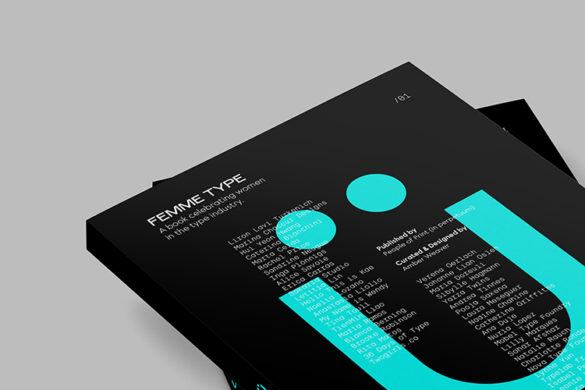Completed Netflix, binged through every single (free) series of Ex On the Beach on Amazon Prime? While we’re still sort of/mostly locked down, it’s about time we (by which I mean, I) consumed some decent, informative, or at least beautiful moving image, and what better way than on the incredible treasure trove of film that is the BFI Player? We’ve selected five superb animations from the comprehensive and endlessly fascinating public information films strand, all of which are free to view on the platform. With some going back more than 50 years, the humour, wit and style of these animations aren’t just historical curiosities, but masterclasses for animators and illustrators today.
Cycling Proficiency Scheme: Father and Son, by Halas and Batchelor, 1959  Halas and Batchelor was a British animation company founded by husband and wife John Halas, a Hungarian émigré to the United Kingdom, and Joy Batchelor. The pair met when Batchelor responded to Halas’s advertisement for an assistant, and they began working together in 1938. Halas and Batchelor was founded in1940 to create war information and propaganda films. and the duo made around 70 of such films over the course of World War II. The studio soon became one of the largest and most influential animation studio in Western Europe for more than half a century. This simple line animation was created by Halas and Batchelor to promote the Government’s National Cycling Proficiency scheme in 1958. Aimed at parents, it offers a stark warning not to let their child become another cycling casualty statistic amidst Britain’s increasingly busy roads.
Halas and Batchelor was a British animation company founded by husband and wife John Halas, a Hungarian émigré to the United Kingdom, and Joy Batchelor. The pair met when Batchelor responded to Halas’s advertisement for an assistant, and they began working together in 1938. Halas and Batchelor was founded in1940 to create war information and propaganda films. and the duo made around 70 of such films over the course of World War II. The studio soon became one of the largest and most influential animation studio in Western Europe for more than half a century. This simple line animation was created by Halas and Batchelor to promote the Government’s National Cycling Proficiency scheme in 1958. Aimed at parents, it offers a stark warning not to let their child become another cycling casualty statistic amidst Britain’s increasingly busy roads.
Rate Rebates,1969
Using an animation style that’s erring very close to that of the Flintstones or the Jetsons—both Hanna-Barbera Productions creations, which aired around the same time this short was made—this witty and rather charming film uses catchy rhymes and hilarious character design to explain to people how to get a rates rebate. Our protagonist family’s matriarch seems intent on keeping up with the Jones’s (which makes final nail sense, in this case), despite the fact they her tubby neighbour’s kids are distinctly more feral that her own well-behaved brood.
Dusty No. 16: Dusty Says Keep Britain Tidy, 1978 I’d assumed this enormous beige creature was a sort of dinosaur, or a llama at a push, before I’d read that it was, in fact, Dusty the kangaroo. Dusty was the star of a series of 17 public information films made in the late 1970s for the environmental charity Keep Britain Tidy, an independent campaigning group established in 1954, following a campaign by the Women’s Institute.
I’d assumed this enormous beige creature was a sort of dinosaur, or a llama at a push, before I’d read that it was, in fact, Dusty the kangaroo. Dusty was the star of a series of 17 public information films made in the late 1970s for the environmental charity Keep Britain Tidy, an independent campaigning group established in 1954, following a campaign by the Women’s Institute.
This one has a strong kiss-me-quick, British seaside poster vibe about it, as we see a family enjoying a sunny picnic until Dusty bounds in and helpfully gathers all their rubbish up into his pouch. It’s worth watching right to the end: that plump, brightly coloured hand-drawn type in the last frame is absolutely sublime. As with Rate Rebates, this is a “filler” public information film that was used to pad out cinema programmes—in this case, spreading the word that littering is absolutely not on. During the campaign’s run, celebs including Marc Bolan to Morecambe and Wise spoke out supporting the cause.
Matches, Richard Taylor, 1973 While the previous shorts were largely public information films directed at adults, the Charley Says series of cut-out animations was squarely focused on children—hence the daft kid and wise, very sweet cat, we’d imagine. The six shorts were broadcast duding the 1970s and 80s in the UK (all six were produced in 1973), commissioned by the British government’s Central Office of Information and directed by Richard Taylor, who began his career at the W.M. Larkin Studio under creative director Peter Sachs. He founded his own studio Taylor Cartoons in the 1960s, where he directed and animated entertainment shorts, including Demonstration, Uhuru and The Revolution in the 1960s, as well as 70s the BBC cartoon series and cult classic, Crystal Tipps and Alistair. Again, the title typography is sublime—somewhere between psychedelia and the type used on John Cale’s Paris 1919 album sleeve.
While the previous shorts were largely public information films directed at adults, the Charley Says series of cut-out animations was squarely focused on children—hence the daft kid and wise, very sweet cat, we’d imagine. The six shorts were broadcast duding the 1970s and 80s in the UK (all six were produced in 1973), commissioned by the British government’s Central Office of Information and directed by Richard Taylor, who began his career at the W.M. Larkin Studio under creative director Peter Sachs. He founded his own studio Taylor Cartoons in the 1960s, where he directed and animated entertainment shorts, including Demonstration, Uhuru and The Revolution in the 1960s, as well as 70s the BBC cartoon series and cult classic, Crystal Tipps and Alistair. Again, the title typography is sublime—somewhere between psychedelia and the type used on John Cale’s Paris 1919 album sleeve.
For his Charley Says shorts, the titular cat acts as a mix of parental guide, voice of reason and the child, Tony’s conscience. Charley’s miaows were voiced by Kenny Everett (these sounds are translated in the animations by Tony). Trivia fans, take note: The Prodigy sampled the episode Mummy Should Know for their 1991 hit Charly, which reached number three in the UK charts.
Cold Comfort, by Halas and Batchelor, 1944 To end, we’re going back to where we began: with masters of anthropomorphism Halas and Batchelor. This film has eerie portents of Darren Aronofsky’s 2000 teen fave, Requiem for a Dream, in which a fridge takes on a terrifying life of its own. In this 1944 animation, however, numerous appliances take on human-like qualities. Broadcast to UK audience during World War II as a “Fuel Flash,” the film was created as part of the drive to ration fuel and encourage people to turn their wireless off when not listening (it’s hard not to take advice from the animated radio in this short, it’s very cute indeed), be “sparing with coal”, switch off the lights and “do all your baking in one go.” Direct, sweet and concise in its messaging, the simple black and white line drawn animation looks as stunning and adorable today as ever.
To end, we’re going back to where we began: with masters of anthropomorphism Halas and Batchelor. This film has eerie portents of Darren Aronofsky’s 2000 teen fave, Requiem for a Dream, in which a fridge takes on a terrifying life of its own. In this 1944 animation, however, numerous appliances take on human-like qualities. Broadcast to UK audience during World War II as a “Fuel Flash,” the film was created as part of the drive to ration fuel and encourage people to turn their wireless off when not listening (it’s hard not to take advice from the animated radio in this short, it’s very cute indeed), be “sparing with coal”, switch off the lights and “do all your baking in one go.” Direct, sweet and concise in its messaging, the simple black and white line drawn animation looks as stunning and adorable today as ever.
- Autobahn - November 26, 2021
- Alphabetical - November 12, 2021
- SOFA Universe - November 8, 2021






